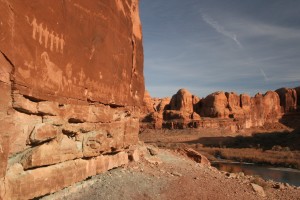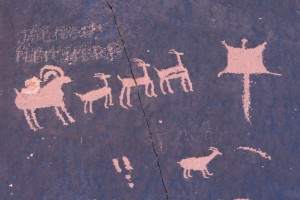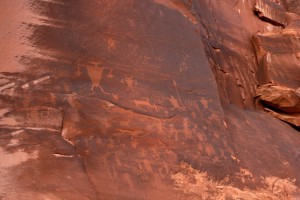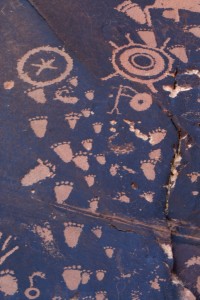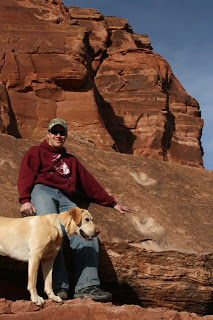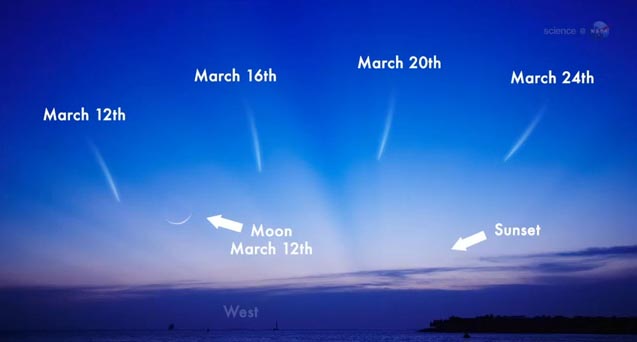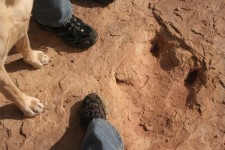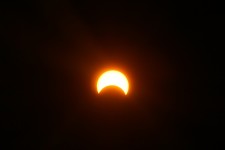Painstakingly scratched into the rock above the Colorado River in southeast Utah were depictions of big horn sheep, birds, bears, horses and human-like figures with bows and arrows. These petroglyphs, also known as rock art or Indian writing, were created by prehistoric and historic peoples over thousands of years.
How many thousands of years? Some of the earliest petroglyphs are depictions of mammoths which went extinct 10,800 years ago and the petroglyphs are believed to have been created between 11,000 and 13,000 years ago. The introduction of bows and arrows into petroglyphs is thought to be around 500 A.D. On the other end of the time frame are petroglyphs of people riding horses, which occurred after the Spaniards reintroduced the horse to the New World in the early sixteenth century (prehistoric horses in North America became extinct about the same time as mammoths and were not tame enough to ride).
Petroglyphs are motifs pecked, ground, abraded, incised or scratched onto a rock surface—usually with another rock. Another form of rock art is pictographs which are paintings on a rock surface.
One might think that petroglyphs are ancient Indian graffiti but they contain greater significance. Prehistoric people didn’t scratch out these motifs on a whim, it took time. According to native people today, each motif’s orientation to other motifs, the horizon and the landscape was planned. Some petroglyphs have modern meaning, such as big horn sheep or alignment with astronomical occurrences, while the meaning of others has been lost through the generations.
Petroglyphs were used to tell stories, record significant events, mark trails, or record cultural or religious beliefs. Geocontourglyphs are petroglyphs that represent a landform or surrounding terrain, such as a squiggly line representing a nearby river.
While petroglyphs at different sites may look similar, each site has unique styles since they were created by different cultures at different times. Petroglyphs occur worldwide on every continent except Antarctica. The highest concentrations are in Africa, Scandinavia, Siberia, Australia and southwest North America.
Prehistoric people did not have a written form of communication, so the fact that different people across the globe created petroglyphs independently for thousands of years is astonishing. The motifs vary worldwide but the need to convey information was still there—and they used the same techniques. They all contain the same types of motifs: abstract designs, basic forms (such as bear paws, bird tracks and human footprints), and life forms of people and animals.
Pictographs weren’t used as a form of communication until 7,000 to 9,000 years ago. Prehistoric people took care to place pictographs in sheltered locations, such as alcoves, caves and under overhangs. They must have known the vulnerability of the paintings to the elements. The substance utilized to make the pictographs was mineral or plant material mixed with a binder of fat residue or blood.
Prehistoric people left a record of their presence on rock walls, in canyons and caves, and on boulders starting thousands of years ago and for some cultures these petroglyphs and pictographs are all that remain of their existence.

